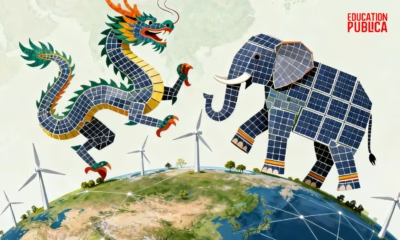EDUNEWS & VIEWS
“One Nation, One Subscription” is a welcome step, in light of publishers’ apathy
Some top journals can be incredibly difficult to access, without paying for subscriptions, that are exorbitant to say the least. Indian scientists know this better than anybody.

On 25th November, the Indian government announced a central scheme to enable public research and education institutions to access scholarly work free of charge. The “One Nation, One Subscription” was earmarked with an initial sum of Rs. 6,000 crores, to cover subscription costs for the next three years. The PIB press release states that over 6,300 government education and research institutions in India will gain access, to the over 13,000 e-journals owned by some 30 international publishers.
Reactions have been positive so far, with many welcoming the move. On X, Dibyendu Nandi, a space physicist at IISER Kolkata, termed the scheme “a step forward in the right direction.” Some top journals can be incredibly difficult to access, without paying for subscriptions, that are exorbitant to say the least. Google Scholar could often the go-to, though rarely do most relevant content be accessible for free. In these cases, research institutions pay for open access to publishing journals.
But this isn’t the norm. Academicians – in the sciences, social sciences and humanities – are kept out of reach, thanks to paywalls that keep scholarships wanting for more liberty. Nonetheless, there are other challenges still remaining, which awaits state intervention to scientists’ call for a more inclusive budget.
Publishing industry’s murky underbelly
India’s arguably the only country with such a relaxed subscription service in place. Usually, departments at universities across the world are hard-pressed to offer students and scholars subscriptions (if at all they do in other places) to journals of a relevant discipline. This means having to pay to view research that occurs in other disciplines, preventing open access to work in interdisciplinary fields. Research ends up in silos by design, which inhibits any substantial progress.
For-profit journals like Springer Nature, and their likes, have excessive fees in place to access their content. Admittedly, not everybody demands for this, definitely not subscription journals. But then subscription journals aren’t lucrative. Nature charges $200 for a single annual subscription, which amounts to nearly Rs. 17,000 in Indian currency (in today’s rate). Meanwhile, open access journals don’t demand authors to pay for publication, but require institutions to pay for them.
But this includes the cream of journals. Scientists in developing countries like India has to pay a lot more to simply have access to the same piece of research. In this light, the government’s decision to waver this fee could ease burden scientists have from participating in research that’s unpopularly symbolic of corporate interference. It’s not like scientists aren’t plagued by other problems that the government isn’t answerable to. Research institutions, even the prominent ones are underfunded for their research programs, have their woes go unheeded for. However, there’s an elephant in the room that’s gone unmentioned in any government communiques.

Credit: Wikimedia
Publishing costs, databases and research in the developing world
There’s a cost accrued to publish papers that institutions have to pay for. Journals don’t publish for free, of course, and there’s cost incurred from conducting peer-reviews, proof-reading work, making illustrations and even doing a press release. It may be worth mentioning to state that an unpaid reviewer could add as much quality and dedication as any other. But scientific publishing has been under close scrutiny over the years, especially with the rise of predatory journals being caught for publishing content without any editorial review.
This isn’t the condition in every journal, but it’s as though the price tag on the journal, say Nature, which is a hybrid journal, makes them more immune from having peer-reviewers or even corporate higher-ups who’d incentivize an exclusive culture that still doesn’t have every quality paper in reach.
Academics have different ways to reach out to their peers, but then institutions pay for this too. In fact, The Hindu, says that some Rs. 30 – 50 crore rupees so far, to access online databases such as SCORPUS and Web of Science, to receive analytics and insights to track citations – building a corpus of related research work. Basically, simply mining papers costs money.
These exorbitant costs cut both ways aside from wanting to simply read papers, in that it diminishes incentives for researchers who’d be doing high-quality research but not have it published in a journal with a higher reach. Corporatization has added to this list of endless concerns on why science in developing countries don’t fare as well compared to their wealthier counterparts. The prices are seen exorbitant for most of the world – conducting research that bears unfair public bias as that being unimportant, and having researchers put away from carrying out ambitious efforts – for which they find no funders, or those who have the zeal to fund any ambitious projects in the first place.
Suffice it to say, scientists in the West do acknowledge this has been a problem, both in terms of having to access themselves personally, since research institutions only provide access for a few select journals, at the cost of viewing research done elsewhere across the globe. So far, dissent has been ineffective, and without options, scientists everywhere choose to publish in other less-known journals, to avoid having to pay off one’s pocket. In this light, the government’s incentives are the right step against limitless greed.
Wanting to be heard
By all means, the government’s action shouldn’t merely come as a savior complex. Indian science needs state support. There are woes in Indian research, that aren’t necessarily contributed purely from talent deficit, as much as it’s from a lack of public finances being used to justify research. The Anusadhan National Research Foundation, which would receive Rs. 50,000 crores in funds, maybe a viable answer, but the elephant in the room is where and how these funds will be distributed and utilized. but there’s a lot more to be addressed.
Scientists, are people, and they’re vulnerable in light of conditions that are too stressful to handle otherwise, and seems a majority of stakeholders in India’s academia has been left out from enter as decision makers in discussions on matters that will affect them, and shape the ecosystem going forward.
Today, academia’s known to suffer from a “publishes or perish” crisis that isn’t making life easy for quality scholarship to thrive for long. And scientists need to be heard, not passively, but as active decision makers. If there’s a message to take away from recent discourse on scientific research in India, it’s that scientists and their institutions are desperate to be heard.
EDUNEWS & VIEWS
Teacher Strength in India Crosses One Crore for the First Time
India’s teacher count crosses one crore in 2024-25, improving pupil-teacher ratios and female participation amid changing student enrolment trends.
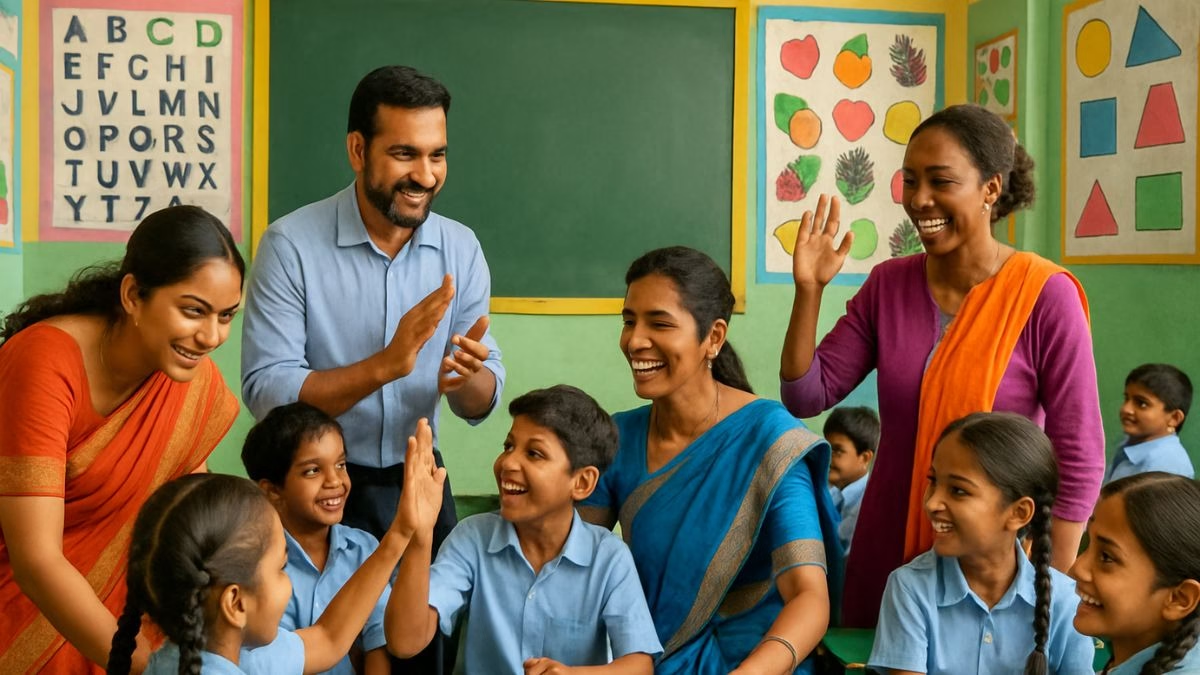
For the first time in India’s academic history, the total number of school teachers in the country has crossed the one crore mark in the academic year 2024-25. This milestone was highlighted in the Unified District Information System for Education Plus (UDISE+) report released by the Ministry of Education on school education.
According to the report, this represents a 6.7 percent increase in the teacher workforce compared to 2022-23. The data further reflects the scale of India’s education system, which now comprises nearly 15 lakh schools catering to over 24 crore students across the country.
The enrolment pattern shows that nearly 50 percent of students are studying in government schools, followed by 41 percent in private institutions, with the rest enrolled in government-aided schools. Encouragingly, female representation among teachers has risen to 54.3 percent, while girls’ enrolment has reached 48.3 percent.
Better student-teacher ratios and declining dropouts
One of the most significant improvements reported is in the Pupil-Teacher Ratio (PTR). At the foundational, preparatory, middle, and secondary levels, the ratios now stand at 10, 13, 17, and 21 respectively, showing marked progress in easing classroom loads for teachers.
The Ministry also reported steady gains in dropout rates, student retention, and Gross Enrolment Ratios, indicating that schools are doing more to support students and keep them in the education system. Special attention has also been given to phasing out zero-enrolment and single-teacher schools, with better infrastructure additions enhancing the overall schooling environment.
Highlighting the broader significance of these trends, the Education Ministry stated that the growing teacher workforce is a critical step in ensuring equitable access and quality in education. Increased teacher availability is expected to improve classroom engagement, reduce regional disparities, and help address learning gaps. Schools, the report noted, are now becoming “more supportive and responsive to students’ needs,” which has also contributed to a reduction in early dropouts and greater inclusivity.
With the teacher count crossing the one-crore landmark and school indicators showing a positive trajectory, the government emphasized that the coming years will focus on consolidating these gains and ensuring that every child in India has the opportunity to access quality education.
Currently, India’s school system serves around 24.7 crore students across approximately 14.7 lakh schools, aligning closely with official numbers but reflecting a slight decline in enrolment compared to previous years. The overall student enrolment in 2024-25 marks a seven-year low, falling by about 11 lakh students compared to 2023-24. This drop is notably pronounced at the primary level (classes 1 to 5), which alone saw a decline of roughly 34 lakh students from the previous academic year. Key states like Uttar Pradesh, Bihar, Rajasthan, West Bengal, and Maharashtra reported some of the steepest enrolment declines, contributing to this national trend.
Government schools now account for about 50 percent of enrolment, though some states have witnessed a significant shift of students from government to private schools. This shift has raised concerns about the government’s capacity to retain students in public schools, with efforts underway to address infrastructural and quality gaps.
On the positive side, there has been progress in girls’ education with girls’ enrolment hovering near 48 percent nationally. The Net Enrolment Ratio (NER) for girls at primary education stands at approximately 90 percent, indicating a high level of age-appropriate enrolment. The secondary and higher secondary levels have shown improvement as well, aligning with the National Education Policy’s target of universal enrolment by 2030.
EDUNEWS & VIEWS
India’s Dhirubhai Ambani School Ranked Among Top Global Highschools
Founded in 2003, India’s Dhirubhai Ambani International School is also one of the youngest schools to feature in the rankings.
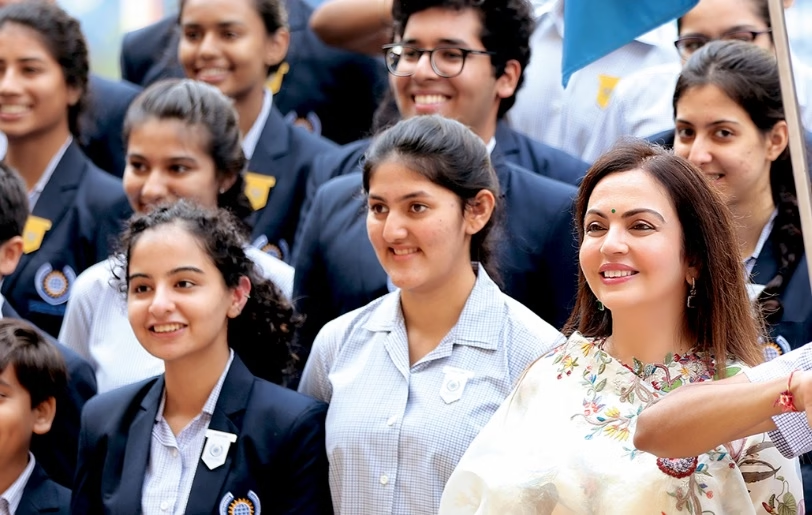
India’s Dhirubhai Ambani International School in Mumbai continues to shine on the global education stage, ranking fifth among schools outside the US and UK in the 2025 HSBC Hurun Education Global Highschools list. Founded in 2003, it is also one of the youngest schools to feature in the rankings.
The report emphasizes schools’ performance based on alumni university destinations, co-curricular development, and institutional reputation. With 190,000 students across the 180 ranked schools, only 0.6% of those listed are from India, underscoring the school’s elite standing.
In a media statement, Rupert Hoogewerf stated, “The list recognizes schools adding the most value to students’ futures. India’s presence through DAIS highlights the global competitiveness of select institutions in the country.”
Dhirubhai Ambani School joins a select group that includes Seoul International School, Chinese International School (HK), and Kolej Tuanku Ja’afar (Malaysia) in representing Asia outside China.
EDUNEWS & VIEWS
Global Highschool Rankings 2025: UK and US Dominate, China Rises
Among the standout institutions, Westminster School maintained its dominance with over 40% of graduates entering Oxbridge
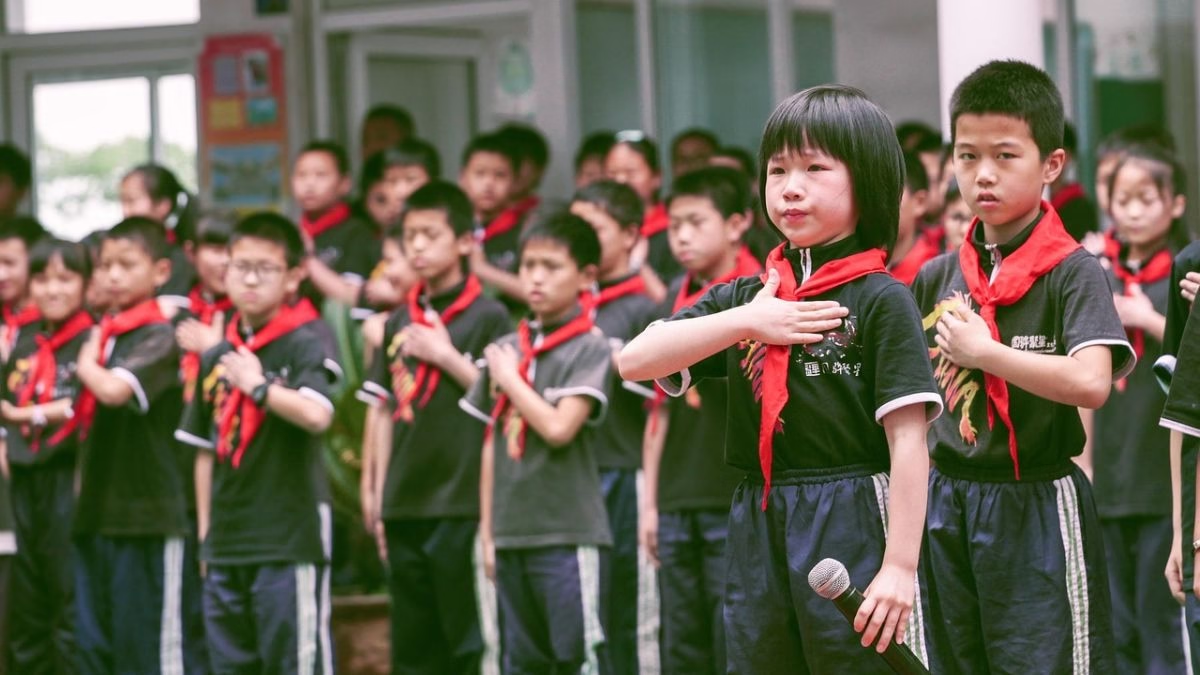
In a global assessment of elite high schools, the HSBC Hurun Education Global High Schools 2025 report has named Westminster School in London as the world’s best high school for the third consecutive year. The annual ranking, now in its third edition, evaluates the top 180 independent schools across 11 countries based on university placements, co-curricular development, and institutional reputation.
The list reflects a shifting but still concentrated landscape of educational excellence. The United States and the United Kingdom together accounted for 85% of the world’s top highschools, with the US leading at 45% and the UK at 40%. However, China emerged as a strong contender, ranking third with 16 schools—up from 13 last year.
“The number of Chinese students studying abroad fell last year, but there are still nearly one million,” said Rupert Hoogewerf, Chairman and Chief Researcher of Hurun Education. “Interestingly, with 16 top-ranked highschools, Chinese families are finding viable options closer to home—avoiding time zone issues and maintaining cultural continuity.”
Among the standout institutions, Westminster School maintained its dominance with over 40% of graduates entering Oxbridge. St Paul’s School rose to second place, while The Dalton School in New York dropped to third. Notably, Winchester College returned to the top 10 and was named the world’s best boarding school, surpassing even Eton College and Phillips Andover.
“These rankings offer forward-looking insights for families planning their children’s international education,” said Kai Zhang, Head of International Wealth and Premier Banking, HSBC Asia, in a media statement. “Destinations like Hong Kong and Singapore are becoming increasingly attractive for their proximity and cultural alignment with Asian families.”
The report also revealed evolving trends in school environments and demographics:
>> 70% of the schools are co-educational, with a growing shift among historically boys-only UK schools admitting girls.
>> 51% offer boarding options, while half remain day schools.
>> The average school size was 1,050 students, with 140 graduating each year.
>> The average age of these schools is 204 years, with some—like King’s School, Canterbury—tracing roots back over a millennium.
Meanwhile, India’s Dhirubhai Ambani International School in Mumbai ranked 5th among schools outside the US and UK, continuing its position as a global outlier in quality private education from the subcontinent.
Despite steep tuition fees—averaging $63,000 annually for boarding schools—demand for places remains high. However, the UK’s recent addition of VAT on private school fees has prompted concerns, with schools like Winchester now costing over $80,000 per year.
Another key theme this year is the integration of creative thinking and AI literacy in education. “There is a real push toward STEAM, adding ‘Arts’ to STEM. Schools are under pressure to future-proof education and prepare students to thrive in the 2050s,” Hoogewerf added.
With data drawn from university destinations, co-curricular achievements, and alumni impact, the HSBC Hurun rankings offer more than a leaderboard—they reflect the evolving priorities and challenges in elite education worldwide.
-

 Space & Physics5 months ago
Space & Physics5 months agoIs Time Travel Possible? Exploring the Science Behind the Concept
-

 Earth6 months ago
Earth6 months ago122 Forests, 3.2 Million Trees: How One Man Built the World’s Largest Miyawaki Forest
-

 Space & Physics6 months ago
Space & Physics6 months agoDid JWST detect “signs of life” in an alien planet?
-
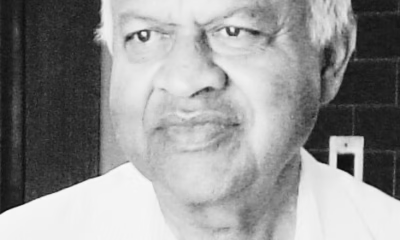
 Know The Scientist5 months ago
Know The Scientist5 months agoNarlikar – the rare Indian scientist who penned short stories
-

 Society4 months ago
Society4 months agoShukla is now India’s first astronaut in decades to visit outer space
-

 Society4 months ago
Society4 months agoAxiom-4 will see an Indian astronaut depart for outer space after 41 years
-

 Earth4 months ago
Earth4 months agoWorld Environment Day 2025: “Beating plastic pollution”
-

 Society6 months ago
Society6 months agoRabies, Bites, and Policy Gaps: One Woman’s Humane Fight for Kerala’s Stray Dogs

